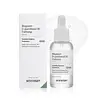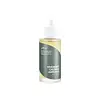What's inside
What's inside
 Key Ingredients
Key Ingredients

 Benefits
Benefits

 Ingredients Side-by-side
Ingredients Side-by-side

Water
Skin ConditioningPanthenol
Skin ConditioningDipropylene Glycol
HumectantMethylpropanediol
Solvent1,2-Hexanediol
Skin ConditioningGlycerin
HumectantButylene Glycol
HumectantPropanediol
SolventGlycereth-25 PCA Isostearate
EmulsifyingDiethoxyethyl Succinate
SolventXanthan Gum
EmulsifyingEthylhexylglycerin
Skin ConditioningArtemisia Vulgaris Extract
Skin ConditioningSodium Citrate
BufferingZea Mays Kernel Extract
Beta-Glucan
Skin ConditioningCitric Acid
BufferingHyaluronic Acid
HumectantHydrolyzed Hyaluronic Acid
HumectantSodium Hyaluronate
HumectantFructan
Skin ConditioningGlucose
HumectantPentylene Glycol
Skin ConditioningDecyl Glucoside
CleansingPolyglyceryl-10 Laurate
Skin ConditioningLactobacillus Ferment Lysate
Skin ConditioningArtemisia Annua Extract
MaskingTaraxacum Officinale Leaf Extract
Skin ConditioningCentella Asiatica Extract
CleansingCamellia Sinensis Seed Oil
HumectantWater, Panthenol, Dipropylene Glycol, Methylpropanediol, 1,2-Hexanediol, Glycerin, Butylene Glycol, Propanediol, Glycereth-25 PCA Isostearate, Diethoxyethyl Succinate, Xanthan Gum, Ethylhexylglycerin, Artemisia Vulgaris Extract, Sodium Citrate, Zea Mays Kernel Extract, Beta-Glucan, Citric Acid, Hyaluronic Acid, Hydrolyzed Hyaluronic Acid, Sodium Hyaluronate, Fructan, Glucose, Pentylene Glycol, Decyl Glucoside, Polyglyceryl-10 Laurate, Lactobacillus Ferment Lysate, Artemisia Annua Extract, Taraxacum Officinale Leaf Extract, Centella Asiatica Extract, Camellia Sinensis Seed Oil
Artemisia Princeps Extract
Skin ConditioningGlycerin
HumectantButylene Glycol
HumectantGlycereth-26
HumectantErythritol
HumectantBetaine
HumectantGlycyrrhiza Glabra Root Extract
BleachingCalendula Officinalis Flower Extract
MaskingPiper Methysticum Leaf/Root/Stem Extract
Skin ConditioningPanthenol
Skin ConditioningPropanediol
SolventBeta-Glucan
Skin ConditioningDipotassium Glycyrrhizate
HumectantHydrogenated Lecithin
EmulsifyingCeramide NP
Skin ConditioningAllantoin
Skin ConditioningCarbomer
Emulsion StabilisingTromethamine
Buffering1,2-Hexanediol
Skin ConditioningArtemisia Princeps Extract, Glycerin, Butylene Glycol, Glycereth-26, Erythritol, Betaine, Glycyrrhiza Glabra Root Extract, Calendula Officinalis Flower Extract, Piper Methysticum Leaf/Root/Stem Extract, Panthenol, Propanediol, Beta-Glucan, Dipotassium Glycyrrhizate, Hydrogenated Lecithin, Ceramide NP, Allantoin, Carbomer, Tromethamine, 1,2-Hexanediol
 Reviews
Reviews

Ingredients Explained
These ingredients are found in both products.
Ingredients higher up in an ingredient list are typically present in a larger amount.
1,2-Hexanediol is a synthetic liquid and another multi-functional powerhouse.
It is a:
- Humectant, drawing moisture into the skin
- Emollient, helping to soften skin
- Solvent, dispersing and stabilizing formulas
- Preservative booster, enhancing the antimicrobial activity of other preservatives
Beta-Glucan is a polysaccharide. It can be derived from the cell walls of seaweed, oats, yeast, and fungi. It hydrates the skin and helps boost your skin's natural barrier.
As an antioxidant, beta-glucan helps fight free-radicals. Free-radicals are molecules that may damage your skin cells, such as pollution.
Studies show this ingredient may be an effective wrinkle reducer as it can deeply penetrate into skin. It has also been show to help with wound healing.
Learn more about Beta-GlucanButylene Glycol (or BG) is used within cosmetic products for a few different reasons:
Overall, Butylene Glycol is a safe and well-rounded ingredient that works well with other ingredients.
Though this ingredient works well with most skin types, some people with sensitive skin may experience a reaction such as allergic rashes, closed comedones, or itchiness.
Learn more about Butylene GlycolGlycerin is already naturally found in your skin. It helps moisturize and protect your skin.
A study from 2016 found glycerin to be more effective as a humectant than AHAs and hyaluronic acid.
As a humectant, it helps the skin stay hydrated by pulling moisture to your skin. The low molecular weight of glycerin allows it to pull moisture into the deeper layers of your skin.
Hydrated skin improves your skin barrier; Your skin barrier helps protect against irritants and bacteria.
Glycerin has also been found to have antimicrobial and antiviral properties. Due to these properties, glycerin is often used in wound and burn treatments.
In cosmetics, glycerin is usually derived from plants such as soybean or palm. However, it can also be sourced from animals, such as tallow or animal fat.
This ingredient is organic, colorless, odorless, and non-toxic.
Glycerin is the name for this ingredient in American English. British English uses Glycerol/Glycerine.
Learn more about GlycerinPanthenol is a common ingredient that helps hydrate and soothe the skin. It is found naturally in our skin and hair.
There are two forms of panthenol: D and L.
D-panthenol is also known as dexpanthenol. Most cosmetics use dexpanthenol or a mixture of D and L-panthenol.
Panthenol is famous due to its ability to go deeper into the skin's layers. Using this ingredient has numerous pros (and no cons):
Like hyaluronic acid, panthenol is a humectant. Humectants are able to bind and hold large amounts of water to keep skin hydrated.
This ingredient works well for wound healing. It works by increasing tissue in the wound and helps close open wounds.
Once oxidized, panthenol converts to pantothenic acid. Panthothenic acid is found in all living cells.
This ingredient is also referred to as pro-vitamin B5.
Learn more about PanthenolPropanediol is an all-star ingredient. It softens, hydrates, and smooths the skin.
It’s often used to:
Propanediol is not likely to cause sensitivity and considered safe to use. It is derived from corn or petroleum with a clear color and no scent.
Learn more about Propanediol